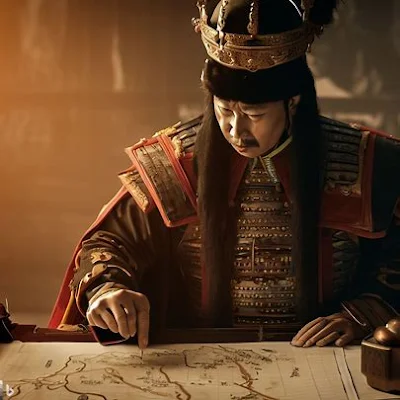What is strategy?
This is a question that many leaders, entrepreneurs and professionals ask themselves when planning and executing their projects.
Strategy is the art and science of defining and achieving long-term objectives, taking into account available resources, the competitive environment and customer needs.
 |
| What is strategy? |
There are different types and levels of strategy, depending on the scope of application, the degree of detail and the time horizon. Some examples are corporate strategy, business strategy, functional strategy and operational strategy. Each of these strategies has its own objectives, tools and methodologies, but all must be aligned and coordinated with each other.
To develop a good strategy, it is necessary to follow a systematic and rigorous process, which consists of several stages. Below are seven key ideas for developing an effective strategy:
1. Analysis of the environment
It consists of identifying and evaluating the opportunities and threats that exist in the market, as well as the internal strengths and weaknesses of the organization. To do this, tools can be used such as the PESTEL analysis (political, economic, social, technological, ecological and legal), the analysis of Porter's five forces (rivalry, threat of new entrants, bargaining power of suppliers and customers, threat of substitute products) or the SWOT analysis (weaknesses, threats, strengths and opportunities).
2. Definition of vision, mission and values
The vision is the desired image of the future that the strategy wants to achieve. The mission is the fundamental purpose that guides the actions of the organization. Values are the ethical principles that govern the behavior of the members of the organization. These elements must be clear, inspiring and shared by all those involved in the strategy.
3. Formulation of objectives
The objectives are the specific results that you want to achieve with the strategy. They must be specific, measurable, achievable, relevant and temporal (SMART). Objectives can be classified as strategic (long-term), tactical (medium-term) and operational (short-term). The objectives must be aligned with the vision, mission and values of the organization.
4. Design of alternatives
It consists of generating and evaluating different options or courses of action to achieve the objectives. To do this, tools such as cost-benefit analysis, multi-criteria analysis or the BCG matrix (Boston Consulting Group) can be used. The alternatives must be creative, feasible and consistent with the analysis of the environment.
5. Selection and implementation
It consists of choosing the best alternative or combination of alternatives to execute the strategy. To do this, the criteria of effectiveness (degree of achievement of objectives), efficiency (relationship between resources used and results obtained) and equity (fair distribution of benefits and costs among interest groups) must be taken into account. Implementation involves assigning responsibilities, resources and deadlines to each action, as well as establishing coordination and communication mechanisms between the organizational units involved.
6. Control and evaluation
It consists of measuring and comparing the results obtained with the planned objectives, as well as identifying deviations and the causes that give rise to them. To do this, tools such as management indicators, dashboards or audits can be used. Control and evaluation make it possible to detect problems, correct errors and improve the performance of the strategy.
7. Learning and continuous improvement
It consists of extracting lessons learned from the strategic process, as well as incorporating new information or changes that arise in the environment. Learning and continuous improvement involve periodically reviewing and updating the strategy, as well as fostering a culture of innovation and adaptation in the organization.
These are some of the main ideas to keep in mind when developing a strategy. However, there is no single or foolproof formula to design and execute a successful strategy. Each organization must adapt the strategic process to its reality, context and specific objectives. What is certain is that strategy is a key element for the development and competitiveness of any organization, and that it requires effective commitment, participation and leadership on the part of all the actors involved.





Comments
Post a Comment